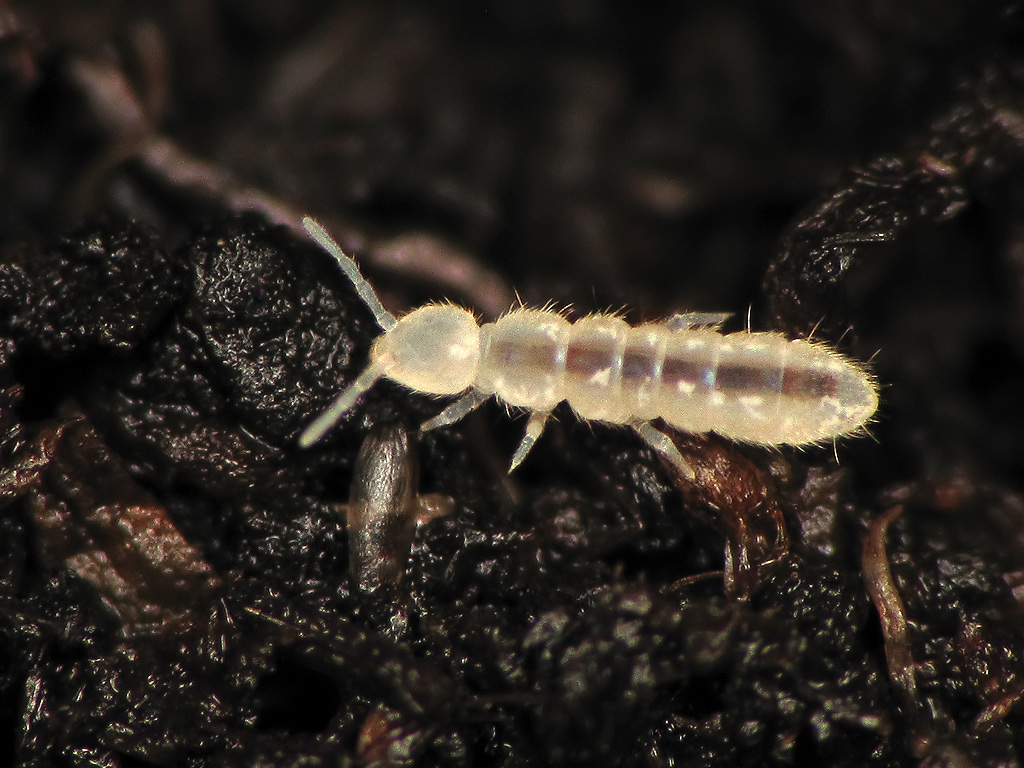Folsomia Candida

Folsomia candida was the subject of tonights C.V.R.I.C Live Microscope Telecast.
Populations consist only of females, which reproduce by parthenogenesis. The globular white eggs take about one week to hatch at 21 °C (70 °F) and three weeks to reach maturity, having moulted five times. Development takes longer at lower temperatures. Adults continue to moult, doing so about 45 times during their lives, including shedding the lining of the midgut. They may live for 110 to 240 days, depending on the temperature, and each may lay about a thousand eggs. The diet consists mainly of the hyphae of fungi including grazing on root mycorrhizae.
Invertebrates living among the soil particles in underground habitats often experience raised levels of carbon dioxide, which tends to increase with depth. Researchers have found that the surface-dwelling springtail Allacma fusca can tolerate a 10% level of carbon dioxide for a few hours while in contrast, Folsomia candida, which lives deeper in the soil, can survive under the same conditions for more than six weeks.


